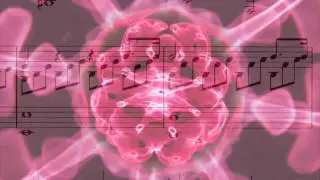Uncategorized
Cymatics: The Shape of the Sound
Cymatics: The Shape of the Sound
Did you ever imagine how music looks like? It seems to be rather impossible to make that happen…
One of the most difficult things to grasp in music is that we cannot see it as we can do with other branches of the arts, such as painting, dancing or acting.
“Music is fathomless” “it cannot be measured” this has been the case for many years through history. Up to now, the manifestation of sound was purely auditory, but now there is a relatively new concept that has been coined by a Swiss Doctor called Jans Jenny, the name that this scientist chose was: Cymatics. The word itself comes from “Kymatics” from the Greek “kyma” or κῦμα which means “wave“.
Jenny, Having spent many years studying the “Chladni sound figures”, i.e. the interaction between individual tones and a very wide range of vibrating metal plates which appears in the sand line images as a type of “sound hieroglyphics” discovered how sound can manifest itself visually through vibrational patterns that started in 1800 with Ernst Chladni, a physicist and musician that first unraveled the mystery through a metal plate on which he would put sand and make it vibrate bowing it with a violin bow. He is considered to be the father of acoustics by many scholars because of that.
This opened the field to various experiments, which Jans Jenny took to another level using other materials such as water or even non-Newtonian fluids to observe how sound can shape matter.
Fascinating images emerge from different frequencies that stimulate the plates. Now, thanks to this discovery, music can be perceived in a whole new way, let’s take this example of the famous “Moonlight Sonata” of Ludwig Van Beethoven, now actually “seeing” the sound we produce when a pianist play it:
https://www.youtube.com/watch?v=dv9UMJbU1kI
Cymatics is by far one of the most important discoveries of the 20th century with a plethora of possible applications, not only in the arts but in chemistry, biology and medicine. In the next article, we will see in depth this alluring topic.
A related technique that is commonly seen in spectral music can be found in the following article:
Approach from Electroacoustic and Spectral Techniques through Instrumental Practice in Musical Composition
Also learn the piano accompaniment options.
Cymatics: The Shape of the Sound
#musiclessonslondon #musicteachers #wkmt #pianoteacherslondon

